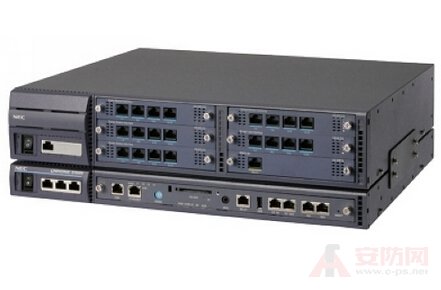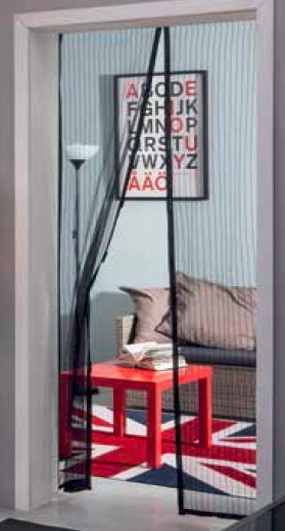Introduction to the working principle of the program-controlled switch
A program-controlled switch is usually a switching device for a telephone switching network that controls the connection of a telephone through a computer program. Below we will learn about the structure and function of the program-controlled switch through the principle of the process control switch.
Principle of program-controlled switch: The main task of the program-controlled switch is to realize the connection between users. It is basically divided into two parts: the channel device and the control device. The voice channel equipment mainly includes various interface circuits (such as a subscriber line interface and a trunk interface circuit) and an exchange (or connection) network; the control device mainly includes a marker and a register in the crossbar switch, and in the program control switch, The control device is an electronic computer, including a central processing unit (CPU), memory, and input/output devices. The program-controlled switch is essentially a switch that uses a computer for "storage program control". It programs various control functions and methods, stores them in memory, and uses the scan data and storage programs for external states to control and manage the entire switching system. jobs.

1, switching network
The basic function of the switching network is to establish a connection path between the calling party and the called user through the connection command of the control part according to the call requirement of the user. In the crossbar switch, it uses various electromechanical connectors (such as crossbar connectors, coded connectors, reed switches, etc.). In the program-controlled switch, the air-switching network composed of electronic switch arrays is mainly used in the program-controlled switchboard. A time-division splicing network composed of circuits such as memories.
2, the user circuit
The role of the user circuit is to implement the connection between various subscriber lines and switches, which is also commonly referred to as the Subscriber Line Interface Circuit (SLIC). According to the switch system and application environment, there are many types of user circuits. For program-controlled digital switches, there are mainly analog subscriber line circuits (ALC) connected to analog phones and digital phones, data terminals (or terminal adapters). Connected Digital Subscriber Line Circuit (DLC).
The analog subscriber line circuit is an interface configured to adapt to the simulated user environment, and its basic functions are;
Battery feed: The switch feeds the DC phone to the common telephone through the subscriber line;
Overvoltage Protection: Prevents voltage surge or overvoltage on the subscriber line from damaging the switch.
Ringing: Feeds the ringing stream to the called user's phone.
Supervisor: Monitors the on-off status of the subscriber line by means of the scanning point to detect the off-line, on-hook, dial pulse and other subscriber line signals of the telephone, and forward it to the control device to indicate the user's busy state and connection requirements.
Codec (CODEC): The use of an encoder and decoder (CODEC), a filter, to perform analog-to-digital and digital-to-analog switching of voice signals to interface with digital switching networks of digital switches.
Hybrid: Performs 2/4 line conversion of subscriber lines to meet the requirements of codec and digital switching for four-wire transmission.
Test: Provides a test port for testing the user circuit.
These seven functions are usually represented by the acronym of the first letter (BORSCHT). For the analog program-controlled switch, the codec function is not required. In the digital program-controlled switch, except for the small-scale switch of some specific applications, the PCM codec is adopted. The digital subscriber line circuit is an interface for adapting to the digital user environment. It is mainly used for line adapter (LAM) or digital telephone (SOPHO-SET) and various data terminal equipment (DTE) such as computer, printer, VDU, and electric. Passed together.
3, access to the repeater
The access repeater is an interface circuit between the trunk and the switching network and is used for the connection of the switch trunk. Its functions and circuits are closely related to the standard of the switching system used and the inter-office trunk signal.
Analog trunk interface unit (ATU), its function is to realize the interface between analog trunk and switching network. The basic functions are as follows:
Send and receive line signals indicating trunk status (such as idle, occupied, acknowledged, released, etc.).
Forwarding and receiving a register signal representing the called number.
Supply call power and signal tone.
The received line signal is provided to the control device.
In the simplest case, if the repeater of a switch is connected to another switch through a solid trunk and uses user loop signaling, the function and function of the analog repeater is equivalent to a "phone". If other more complicated signal methods are used, the repeater should implement the corresponding voice and signaling transmission and control functions.
The role of the Digital Trunk Interface Unit (DTU) is to implement an interface between the digital trunk and the digital switching network. It transmits trunk signaling through the PCM-related time slots to perform basic functions similar to analog repeaters. However, since the digital trunk transmits the PCM group digital signal, it has some special problems of digital communication, such as frame synchronization, clock recovery, pattern switching, signaling insertion and extraction, etc., that is, to solve signal transmission, synchronization and information. Let the three aspects of the connection problem.
The basic functions of the digital trunk interface unit include frame and multiframe sync code generation, frame adjustment, zero-suppression, pattern conversion, alarm processing, clock recovery, frame synchronization search, and inter-office signaling insertion and extraction, just like analog users. The BORSCHT of the circuit can also generalize the above eight functions of the digital relay unit as GAZPACHO.
4, control equipment
The control part is the core of the program-controlled switch. Its main task is to execute the stored program and various commands according to the requirements of external users and internal maintenance management to control the corresponding hardware to implement the switching and management functions.
The main body of the program-controlled switch control device is a microprocessor, which can be divided into two types: centralized control and distributed control, depending on its configuration and control mode. In order to better adapt to the requirements of software and hardware modularization, improve processing capability and enhance the flexibility and reliability of the system, the degree of decentralized control of the program-controlled switching system is increasing day by day, and partial or complete distributed control methods have been widely adopted.
Summary: This article helps us understand the principle of the program-controlled switch by describing the function and composition of the program-controlled switch.

High quality polyester fabric, UV-resistant, washable, light and air permeable, , durable, good wind resistance performance, easy installing, EN13561-2015 certification.
Use the hook and loop tape fixed the products on the door wall
Easy to take off it when you don't need it
Natural insect protection with open door
All the fabric have the Grey Scale Level 5 performance under the xenon-arc lamps with the condition ISO 4892-2:2013 cycle 1.
As the professional Insect Screen supplier, we cooperated with consumer from all the world to settle the insect problem.
Magnet Insect Screen Curtain,Screen Door Curtains,Durable Magnetic Insect,Magnetic Insect Screen
Huanghua Techo Building Material Co., Ltd. , http://www.insectsscreen.com
